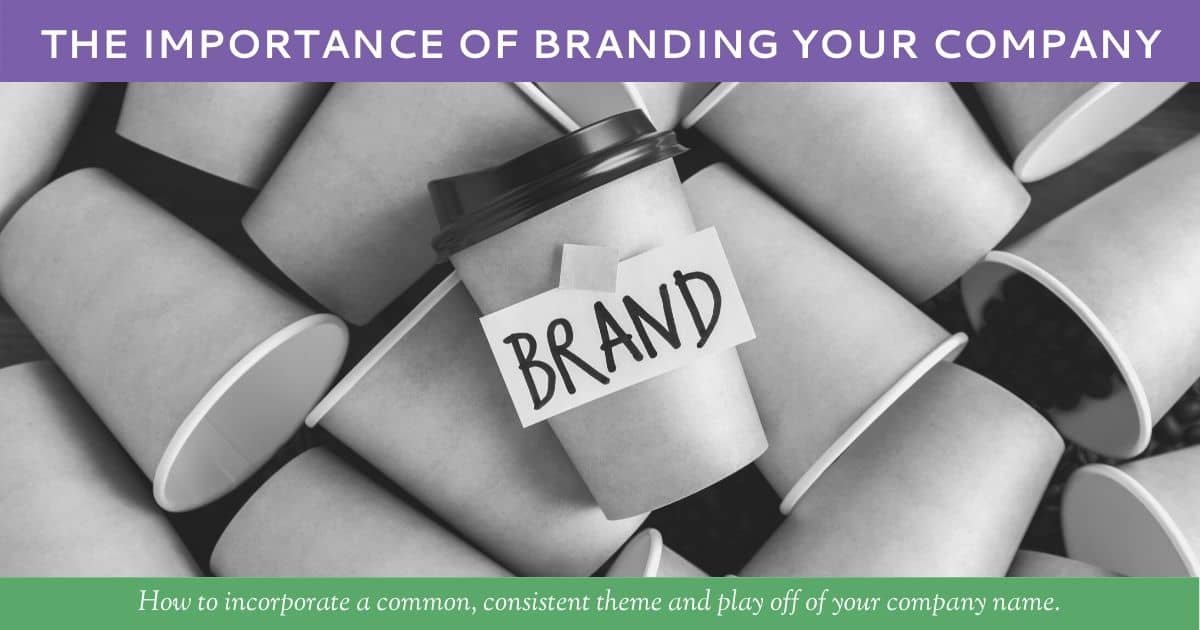The Importance of Branding Your Company
How to incorporate a common, consistent theme and play off of your company name.
By Nici Lucas
“Branding is simply a more efficient way to sell things,” says Al Ries, marketing professional and author. So, let’s do the math. Usually, the number one goal of a business owner is to make money. If branding is an efficient means to sell products, services, personas, and “things,” then branding must be pretty damned important.
Guess what? It is.
Branding, by way of logos, icons, taglines, and more, is imperative and essential for business success. As Amazon Founder Jeff Bezos one said, “A brand for a company is like a reputation for a person.” So, there you have it.

The Golden Arches of McDonald’s were ranked the 2nd most recognizable logo in the United States, just after Apple’s iconic, well, apple. Photo credit: AlesiaKan – stock.adobe.com
The importance of branding—a company’s “mark” or identification—is shown by the opinions, feelings, and actions taken by the consumer. A company’s brand is usually what is first recognized by a potential customer. When paired with consistency and an engaging element (a powerful visual or audible), that recognition leads to trust and eventual loyalty.
When you hear a particular company’s jingle over and over again (think Lucky Charms’ song, “They’re magically delicious!”), or consistently see a company’s logo in commercials, on products, in print, or on social media (picture Apple’s apple icon), you start expecting to hear and see the same message from that company. Whether or not you like the jingle or logo, when you keep hearing or seeing something repeatedly, the message gets stuck in your head, even subconsciously.
As expectations for consistent branding are met, trust is formed, leading to eventual loyalty. Then, of course, trust and loyalty create new customers and new business. Successful, strategic, and consistent branding is a full circle of consumers seeing, believing, trusting, and buying.
How to Successfully Brand Your Company
Knowing the importance of branding is one thing. Successfully creating your brand is another. So, how do you do it?

The Starbucks logo is on everything the company carries, from carryout bags and cups to hot stoppers and napkins. No wonder it’s ranked the 5th most recognizable logo in the United States. Photo credit: dontree – stock.adobe.com
First, determine what your company’s identification, mark, or brand is. Yes, it includes your products and services, but it also includes your message to potential customers and the way that you sell and share information. Start by brainstorming and writing down ideas as well as taking a look at what your competition is doing. Remember, though, to be original and maintain your own voice.
Now, how can you play on your company identification in order to create a recognizable and trustworthy brand? Begin with the visuals by creating an applicable color palette, font family, logo, symbol, icon, tagline, statement, and message. (Don’t fret if you get stuck here! You might need to obtain help from a marketing company or graphic designer.)
Get creative. If you’re starting a new company, think about the nature of your business—what do you want your image to be, and how do you want people will see it? Do some research and work backwards (or “back-words,” if you will).
Take Starbucks, for instance. The founders wanted a company name that started with “st” because they felt that words beginning with these letters sounded powerful. After creating a list of words, Starbo, a town in Washington, was highlighted. This word correlated to Starbuck, a character in Moby Dick, a book about whaling, sailors, and the sea, which eventually led to the word Starbucks. Although Moby Dick has nothing to do with coffee, the company has embraced the word and concept. A mermaid, an aquatic creature from folklore, is incorporated into the logo.

Amazon’s logo—ranked the 9th most recognizable logo in the United States—is so well known that sometimes the company’s packaging doesn’t even feature the word “amazon,” just the recognizable smile. Photo credit: Simone – stock.adobe.com
If you have an existing company, think about how branding could potentially play off of the company name. You might create a visually powerful logo, icon, or product based on the company name, part of the name, or a connotation of the name. Here are two examples:
- The Amazon company name was created with the world’s largest river in mind and a mission to be the largest online bookseller. When the company was created, however, Jeff Bezos might not have completely anticipated selling millions of products online in addition to books. When the company did begin selling everything from A to Z, a logo was created to reflect exactly that—the company name with a “smile” underneath, connecting the letters “a” and “z.”
- The McDonald’s company name was created by siblings with the last name of McDonald. Over the years and decades, McDonald’s has consistently and strategically incorporated the “M” (or “Golden Arches”) in the company’s branding as well as incorporating “Mac” or “Mc” into many product names, like the McChicken, McNuggets, Big Mac, Egg McMuffin, and the mostly forgettable McDLT.
Step three is to begin to include and feature the logo, icon, and branding everywhere you can: on photographs, graphics, and images on social media; on your business cards, letterhead, and merchandise; within your website, mobile app, and email signature. Start integrating and don’t stop. There might be modifications over the months, years, and decades, but keep incorporating.
Finally, be consistent! Ralph Waldo Emerson said that “A foolish consistency is the hobgoblin of little minds.” Strategic consistency, however, is nowhere near foolish.


